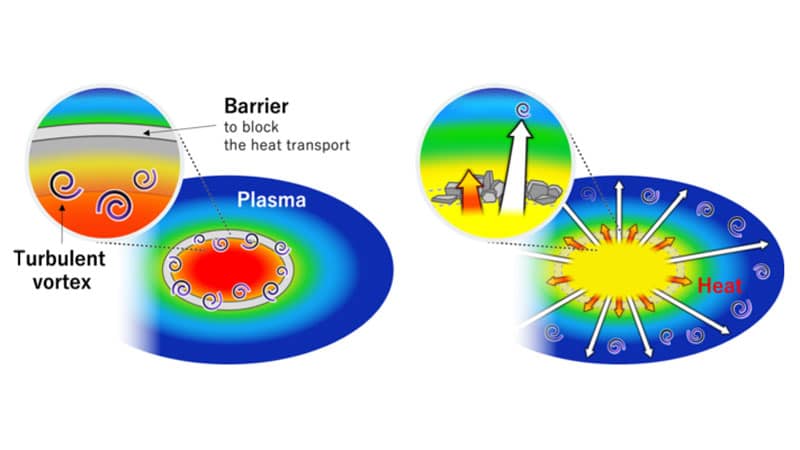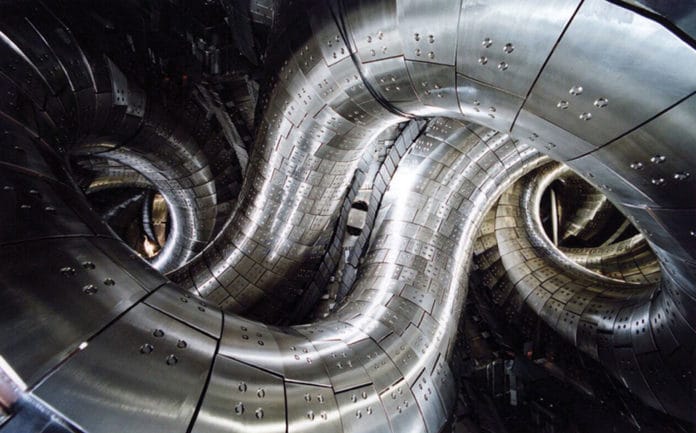Achieving a fusion power plant requires plasma confinement of more than 100 million degrees Celsius in a magnetic field. Plus, it should maintain this state for a long.
Using measuring instruments developed independently, scientists at the National Institutes of Natural Sciences (NINS), Japan, in collaboration with the University of Wisconsin, USA,- discovered for the first time in the world that turbulence moves faster than heat when heat escapes in plasmas in the Large Helical Device (LHD).
The ability to forecast changes in plasma temperature is one of the characteristics of this turbulence. It is expected that future observations of turbulence will lead to the development a system for real-time plasma temperature control.
Turbulence disturbs the plasma, causing the heat from the confined plasma to move outward, lowering the plasma temperature. Understanding the properties of heat and turbulence in plasma is required to tackle this challenge. However, plasma turbulence is so intricate that we don’t yet have a complete grasp of it. The movement of created turbulence in plasma is particularly poorly understood. It necessitates sensors capable of measuring the time evolution of minute turbulence with great sensitivity and extremely high spatiotemporal resolution.

A “barrier” can form in the plasma, which acts to block the transport of heat from the center outward. The barrier makes a strong pressure gradient in the plasma and generates turbulence. Assistant Professor Naoki Kenmochi and his research group have developed a method to break this barrier by devising a magnetic field structure.
Prof. kenmochi said, “This method allows us to focus on the heat and turbulence that flow vigorously as the barriers break and study their relationship in detail. Then, using electromagnetic waves of various wavelengths, we measured the changing temperature and heat flow of electrons and millimeter-sized fine turbulence with the world’s highest level of accuracy. Previously, heat and turbulence had been known to move almost simultaneously at a speed of 5,000 kilometers per hour, about the speed of an airplane. Still, this experiment led to the world’s first discovery of turbulence moving ahead of heat at a speed of 40,000 kilometers per hour. The speed of this turbulence is close to that of a rocket.”
“This research has dramatically advanced our understanding of turbulence in fusion plasmas. The new characteristic of turbulence, that it moves much faster than heat in a plasma, indicates that we may be able to predict plasma temperature changes by observing predictive turbulence. In the future, based on this, we expect to develop methods to control plasma temperatures in real-time.”
Journal Reference:
- Kenmochi, N., Ida, K., Takizawa, T. et al. Preceding propagation of turbulence pulses at avalanche events in a magnetically confined plasma. Sci Rep 12, 6979 (2022). DOI: 10.1038/s41598-022-10499-z
